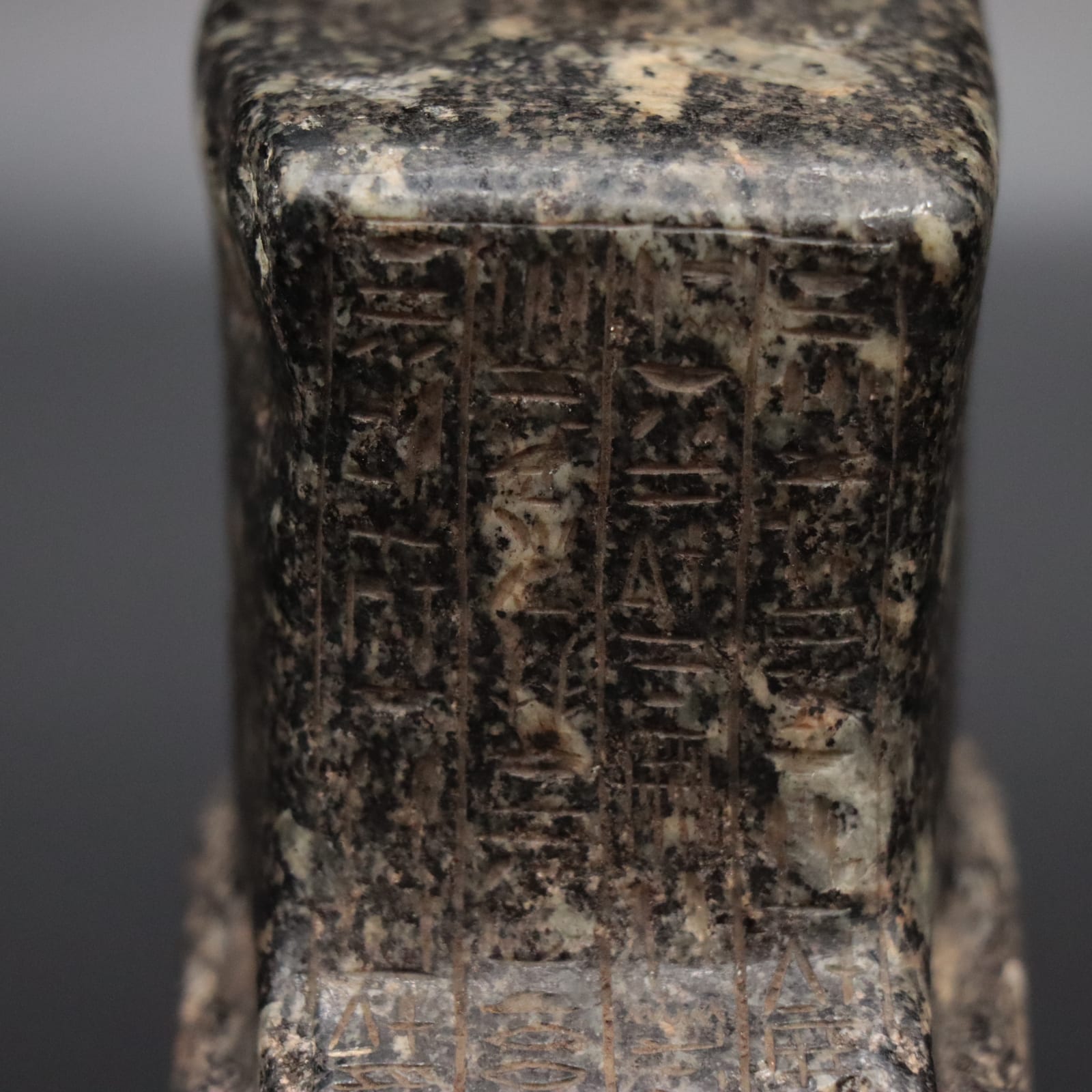18th Dynasty Block Statue, 1550 BCE - 1292 BCE
Granite
13.5 x 5.5 x 8.5 cm
5 1/4 x 2 1/8 x 3 3/8 in
5 1/4 x 2 1/8 x 3 3/8 in
LI.3239
Further images
A remarkably well-preserved example of 18th Dynasty Block Statue. The term ‘block statue’ identifies a specific category of Egyptian sculptures, distinct by their peculiar appearance and iconography. The person represented...
A remarkably well-preserved example of 18th Dynasty Block Statue. The term ‘block statue’ identifies a specific category of Egyptian sculptures, distinct by their peculiar appearance and iconography. The person represented is portrayed in a distinctive squatting pose, with the knees drawn to the chest and the arms crossed on top of them. In this case the solidity of the figure is even furtherly enhanced by the fact that this man wears a thick cloak, which transforms his body in an inverted truncated pyramid, from the top of which the head emerges.
Block statues represent private individuals who are male and adult, and never kings or deities. They were often dedicated in sanctuaries and could be part of larger monuments such as a stele. They usually bear inscriptions, as in this case.
This man wears a bag wig. Facial features are rendered in detail. The mouth is indented, the ears are worked on a single plan. Four lines of inscriptions have already been carved on the frontal part of the cloak, with two horizontal lines on the base.
Block statues represent private individuals who are male and adult, and never kings or deities. They were often dedicated in sanctuaries and could be part of larger monuments such as a stele. They usually bear inscriptions, as in this case.
This man wears a bag wig. Facial features are rendered in detail. The mouth is indented, the ears are worked on a single plan. Four lines of inscriptions have already been carved on the frontal part of the cloak, with two horizontal lines on the base.













